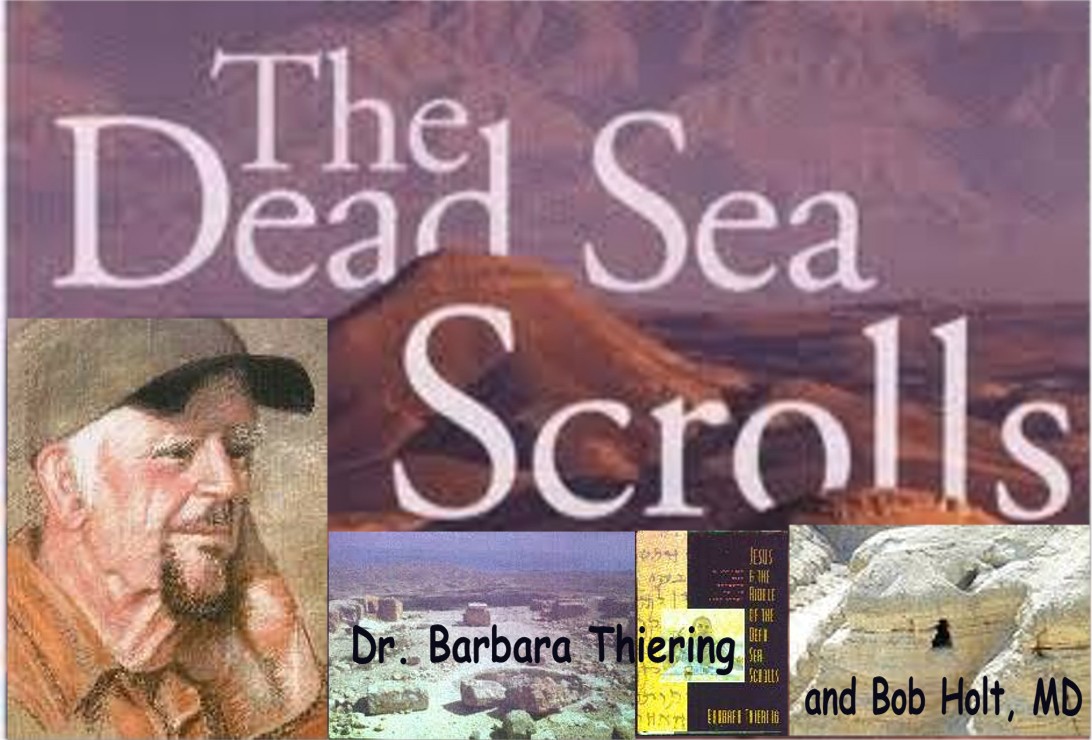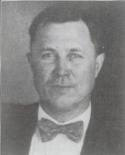|
|
|
Page 1 of 2 |
* PENTECOST*
THE "ONENESS" PENTECOSTALS HAVE A POINT! |
|
A New Light Dawns! |
|
|
|
, *ONENESS* A Distinctive Name or Emphasis that identifies, at least to Pentecostal Christians World-wide, a group of Christian Believers who emphasize that JESUS CHRIST, through his Name, has Power to Save People above and beyond the usual emphasis on the "Divine Trinity". While other Christians may be satisfied to be baptized in the name of the "Father, Son. and Holy Ghost" (as promoted by the Nicene Creed) "Oneness Christians" mandate another Baptism, that in Jesus' Name, and promote the idea that this is more powerful and meaningfull than that promoted in the Nicene Creed.) I will represent here this important group through the stories of two of their very important and prominent preachers --
Glen Cook and Samuel N. Handcock
|
|
WITH ANGELS! |
|
Glen Cook: Oneness Apostle From Old Waymarks Website Posted on Internet As the Azusa Street meetings began to produce concentric waves of revival throughout Los Angeles and Southern California, many holiness ministers visited the mission at 312 Azusa Street to contend with William Seymour, the African American leader of the burgeoning Pentecostal group, concerning his strange new doctrine of speaking in tongues. One of the early preachers to withstand Bro. Seymour was Glenn A. Cook, who was conducting holiness tent meetings at Seventh and Spring Streets in Los Angeles. Cook was deeply impressed by Seymour’s humility and patience and began to attend the Pentecostal meetings. He eventually apologized to Bro. Seymour for his “hard sayings” and spent five weeks in heartfelt repentance and spiritual agony before receiving the baptism of the Holy Ghost:
I felt that I was really lost and unless I received the Holy Ghost and spoke in tongues I would miss all. When I had just about given up all hope, the Holy Ghost fell on me as I lay in bed at home. I seemed to be in a trance for about twenty-four hours and the next day in the meeting began to speak in tongues.
Bro. Cook proved to be an important asset to the work of the Azusa Mission and was soon ordained an elder by Bro. Seymour. A former news reporter and a printer by trade, Cook assisted with the publication of The Apostolic Faith, the mission’s international publication, answered correspondence, and handled the mission’s finances.
In December 1906, Bro. Cook began an effective evangelistic campaign throughout the West, Midwest and South, spreading the Pentecostal message. He arrived in Lamont, Oklahoma where “quite a number were tarrying and waiting for Pentecost.” Hungry souls traveled to his meetings from over 100 miles away. Heading eastward, he delivered the doctrine to Mother Mary Moise in St. Louis then on to Chicago. In Indianapolis, he held powerful meetings, where several members of the Christian Missionary Alliance received the baptism of the Holy Ghost, including the Flower family, defectors from Dowie’s Zion who later became influential leaders in the Assemblies of God. In an Apostolic Faith report, Cook accurately predicted that Indianapolis would become “a center of power, being an inter-urban railway center like Los Angeles.” Cook was gladly received by a number of Church of God in Christ adherents in the South, while their bishop, Charles H. Mason, was on site at Azusa receiving the Holy Ghost. In 1914, Cook was evangelizing in the east when he received a letter from Frank Ewart, who was conducting meetings in Los Angeles “stating that he and a number of my friends had started a tent meeting and were baptizing people in the name of the Lord Jesus Christ.” Ewart invited Cook to return to Los Angeles to assist in the work. He accepted Ewart’s scriptural message, and he and Bro. Ewart rebaptized one another in a rented trough. “During the following months,” wrote Bro. Cook, “the great revival broke out, many hundreds being baptized in the Name of Jesus.” Bro. Cook’s acceptance of the doctrine of the mighty God in Christ placed him in the ranks of the Oneness Pentecostals, who were transforming the movement with a deeper revelation of Jesus Christ. As a church planter, Cook took up the burden to revisit the works he had helped to found in 1906 and 1907 with the Oneness message: During the spring of 1915, the call came to me from the Lord to go back East and carry the message to the places where several years before I had carried the message of the Holy Ghost baptism with speaking in tongues. My first stop was St. Louis, where I visited the Rescue Home of Mother Moise . . . Before leaving St. Louis, Mother Moise, Ben Pemberton, and about forty others were baptized in the Name of Jesus in the Mississippi River. Afterward, he traveled on to Indianapolis where: . . . the saints were prepared and hungry for the new message. Great crowds turned out from the beginning, people coming in from different points in Indiana, Ohio, and Illinois. During the thirty days of the meeting, I was informed by those who kept a record that some 469 were baptized in the Name of Jesus Christ. Among those baptized were G.T. Haywood, L.V. Roberts, the new Bishop [Samuel N.] Hancock, Brother [T.C.] Davis, and about all the leaders of that day. The Lord made a clean sweep, leaving few Pentecostal people in te city who were not baptized in the Name of Jesus. Throughout his lifetime, Cook continued to promote the powerful message of baptism in the Name of Jesus and the fullness of the Godhead in Christ. He contributed articles to a number of Apostolic circulars including The Blessed Truth, The Herald of Truth, and Meat in Due Season. He continued a deep friendship with Bro. Frank Ewart, who introduced him to the Oneness truths, and worked alongside him in Pentecostal ministry in Los Angeles, where he pastored a work in Belvedere. When he died in 1948, Bro. Glenn A. Cook was memorialized as a trailblazer. The seeds of truth that he scattered throughout the United States as an apostle of the Faith continue to bring forth a mighty harvest. Posted in Azusa Street, Christ Temple (Indianapolis), Frank Ewart, Garfield Thomas Haywood, Glenn Cook, Holiness Movement, Joseph R.R. Flower, L.V. Roberts, Mary Moise, Oak Hill Tabernacle (Indianapolis), Samuel N. Hancock | 2 Comments »
Samuel N. Handcock, Founder of the Pentecostal Church of the Apostolic Faith In 1957, Bishop Samuel Nathan Hancock left the Pentecostal Assemblies of the World (PAW) to start another organization, the Pentecostal Churches of the Apostolic Faith, Incorporated. The exodus of this charismatic pastor of the 3,000-member Greater Bethlehem Temple in Detroit, Michigan was the culmination of years of contention and disagreement. While some have branded Bishop Hancock a heretic and a schismatic, the facts surrounding his departure seem typical of the organizational fecundity so typical of the Pentecostal movement. Samuel Nathan Hancock, who was born 9 November 1883 in Adair County, Kentucky, came to Indianapolis, Indiana with his family at the age of 5. In 1914, Samuel Hancock began attending services at G.T. Haywood’s church at 11th and Senate. On 5 September 1914, he received the Holy Ghost and was water baptized (Tyson 37). In 1916, Samuel Hancock was amongst the 465 members of Christ Temple who submitted to rebaptism in the Name of Jesus Christ, following Glen Cook’s fortuitous campaign throughout the Midwest spreading the message of the mighty God in Christ. Hancock felt called to the ministry and showed an aptitude for leadership. He was ordained to the ministry by G.T. Haywood and became Bishop Haywood’s assistant pastor in 1917. In 1921, Samuel Hancock was invited to pastor a small group of Apostolic believers in Detroit, Michigan. After much prayer, he agreed to accept the position and declared by faith, “I will do a great thing in Detroit, Michigan.” By 1926, the church had grown to nearly 400 members; and in 1929, a new 1,200-seat sanctuary was built at 2254 Clinton Street. Finally, in 1962, the church purchased the Jewish synagogue, Shaarey Zedek, which continues to be the present home of Clinton Street Greater Bethlehem Temple Church of the Apostolic Faith (“Bishop Samuel Nathan Hancock”). In 1927, Samuel Hancock had been elevated from the office of District Elder to Bishop within the PAW. Following the untimely death of Presiding Bishop G.T. Haywood in April 1931, his official post was left vacant for a year out of his respect for his incomparable legacy. During this period, the PAW was approached by Howard Goss and other leaders of the Pentecostal Ministerial Alliance. Through some hasty merger discussions, the two organizations combined to form the Pentecostal Assemblies of Jesus Christ, and Bishop Hancock moved into the newly-formed amalgamation. The merger was ultimately dissatisfactory, and the PAW restored its charter under the leadership of Samuel Grimes (Golder 96-97). However, Hancock, who served as a presbyter in the PAJC, did not return to the PAW until 1938, when many of the Black brethren returned after a General Conference was held in Tulsa, Oklahoma, a racially-segregated city. By 1940, Samuel Hancock had moved to the center of a doctrinal controversy within the PAW, and a special meeting was held in Columbus, Ohio to solidify the biblical standards of faith for the organization. Hancock was accused of teaching that Jesus Christ was only the son of God, not God Himself. Despite this notion, he was named in 1943 as a member of the Board of Directors of Aenon Bible School, the official seminary of the PAW (Golder 121-125). In 1955, Bishop Hancock, along with other members of the Executive Board, signed an affirmation of the Oneness doctrine (Golder 149). Bishop Morris E. Golder, who wrote an official history of the Pentecostal Assemblies of the World, portrays Samuel Hancock as doctrinally aberrant, referring to his teachings on the Godhead as “’strange’ ideas far removed from what was held as biblical by our organization.” Golder also notes that the 1955 special meeting of the Executive Board convened specifically to refute the errors of Bishop Hancock. Further, Golder believes Hancock opposed the leadership of Samuel Grimes, believing that he himself should have been appointed Presiding Bishop following the death of Bishop Haywood (140). On 20 November 1957, Bishop Hancock along with Bishops Heardie Leaston, Willie Lee, and Elder David Collins, officially incorporated the Pentecostal Churches of the Apostolic Faith. Interestingly, Bishop J.E. Moore, present Presiding Bishop of the PCAF, adamantly declares that Hancock never denied the deity of Christ. According to Bishop Moore, Hancock simply believed that the manifestation of the Son was not properly emphasized in the preaching and teaching of the PAW (“Interview”). Today, the doctrinal statement of the PCAF clearly demonstrates their strong affirmation of the revelation of the mighty God in Christ: We believe in the oneness of God; that there are three manifestations of the one God—Father, Son, and Holy Ghost. The name by which God is known is Lord Jesus Christ. (“What We Believe”). In fact, Willie Lee later left the PCAF because he did not believe that Jesus was God, further suggesting that the PCAF position represented Oneness orthodoxy. When he died on 18 August 1963 after a brief illness, Samuel N. Hancock left behind a thriving organization of nearly 600 churches. Under his leadership, Greater Bethlehem Temple made an important spiritual and humanitarian mark on Detroit. An estimated 100,000 people have been baptized in Jesus Name and filled with the Holy Ghost through the ministry begun by Samuel N. Hancock. Hancock established a soup kitchen to feed the poor throughout the Great Depression, a 52-bedroom Girls’ Home, a Boys’ workshop for teaching carpentry and trade skills, a church-owned supermarket, and a church farm. Hancock also established satellite churches throughout Michigan in New Haven, Port Huron, Jackson, Delray, and another work in Detroit (“Bishop Samuel Nathan Hancock”). Ultimately, Bishop Hancock proved an important leader and innovator, and eternity will accurately tell his undeniable contributions to the Apostolic Pentecostal movement. Sources: “Bishop Samuel Nathan Hancock.” Clinton Street Greater Bethlehem Temple of the Apostolic Faith. http://www.templedetroit.org. Golder, Morris E. History of the Pentecostal Assemblies of the World. Indianapolis: 1973. Interview (Personal). Bishop J.E. Moore, Presiding Bishop of the Pentecostal Churches of the Apostolic Faith, Inc. 29 April 2010. Tyson, James. Earnest Contenders for the Faith. Pentecostal Publications, Indianapolis: 1982. “What We Believe.” Pentecostal Churches of the Apostolic Faith, Inc. http://www.pcaf.net Posted in Aenon Bible College, David Collins, Detroit, Garfield Thomas Haywood, Greater Bethlehem Temple, Heardie Leaston, Incorporated, Joseph E. Moore, Michigan, Michigan, Morris E. Golder, Pentecostal Assemblies of the World, Pentecostal Churches of the Apostolic Faith, Samuel K. Grimes, Samuel N. Hancock, Willie Lee | 20 Comments
|

|
These two famous Pentecostal Preachers, one black, one white, (not that that makes any difference to God or the Holy Ghost) ,raised in their productive and successful lifetimes, several questions that they and others could not resolve successfully do to either not having available the "Dead Sea Scrolls" or Dr. Barbara Thiering's Bookl -- or if they knew about these, discouraged by the suppression of this information by virtually all of the Christian leaders and organizations. On a follow-up page, Dr. Holt will here present the QUESTIONS raised by Glen Cook and Bishop Samuel Hancock and the ANSWERS to these questions that are available from this new information.
|
|
|



